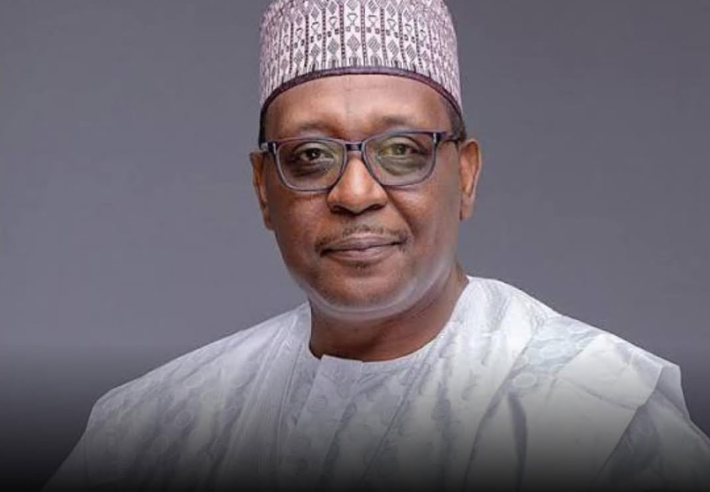
Nigerians Are More Satisfied With Healthcare Than Ever — But Can Rising Confidence Survive the System’s Toughest Challenges

Nigeria’s healthcare system, long burdened by funding gaps, workforce shortages, and public distrust, recorded a surprising surge in citizen confidence this year. According to the Coordinating Minister of Health and Social Welfare, Prof. Muhammad Pate, patient satisfaction with healthcare services has climbed to 74%—its highest in recent years—signaling what he described as a “positive shift in perception and outcomes.” Speaking at the 2025 Joint Annual Review themed “All hands, one mission: Bringing the Nigerian health sector to light,” Pate outlined the country’s progress while emphasizing that crucial challenges remain unresolved.
His announcement was based on national citizen perception surveys conducted over three years—2023, 2024, and 2025—designed to track how Nigerians experience and evaluate the nation’s complex health system. “Thousands of Nigerians shared their experiences. Nearly half now believe the government considers their views in decision-making,” he said, highlighting a crucial improvement in governance trust. Equally striking was the rise in confidence in the government’s capacity to manage health emergencies, now standing at an encouraging 67%, a leap that comes on the heels of recent public health threats that tested Nigeria’s preparedness.
To citizens who have long grappled with overcrowded hospitals, out-of-pocket payments, and recurring doctor strikes, the headline figure of 74% satisfaction may appear surprisingly optimistic. But the minister insisted that progress is visible on the ground. “Access to services is improving,” he said. “However, affordability must improve further.” This acknowledgment points to one of the deepest cracks in the system: the financial burden that still prevents millions from seeking timely medical care. While more Nigerians report positive encounters in hospitals and clinics, high costs continue to push many towards self-medication or delay in seeking treatment—issues the ministry says it is determined to fix.
A major component of the government’s strategy lies in expanding health insurance—one of Nigeria’s weakest links in healthcare delivery. For years, only about 6–7% of Nigerians were covered by any form of health insurance, leaving the rest vulnerable to sudden medical expenses. According to Pate, coverage has now doubled to 12%, driven by mandatory insurance policies and the implementation of the Vulnerable Groups Fund aimed at protecting the poorest citizens. This expansion, though still modest compared to global standards, marks a significant turning point. If sustained and widened, experts believe it could drastically reduce catastrophic health spending, which currently drives many households into poverty.
The minister further revealed that more than 20,000 frontline health workers have been recruited into federal tertiary hospitals within the last year—a response to the severe workforce shortfall worsened by the ongoing “japa” wave of medical migration. Nigeria has lost thousands of doctors, nurses, and specialists to Europe, the United States, and the Gulf in recent years, leaving many hospitals understaffed. The recruitment drive, along with a federal approval of over ₦50 billion to clear arrears and allowances, appears aimed at stemming this exodus and restoring morale in the sector. Whether these measures will be enough to keep professionals in the country remains to be seen, but for now, they represent an aggressive attempt to stabilize the workforce.
Minister of State for Health, Dr. Iziaq Salako, also underscored the scale of ongoing reforms, describing them as part of a larger national agenda to rebuild confidence in the health system. Salako highlighted the National Health System Reform and Investment Initiative, which, according to him, holds the potential to save Nigeria an astonishing ₦4.8 trillion annually from preventable diseases—costs that have long drained national resources and strained households. Even more notable is the projection that Nigeria could retain up to ₦850 billion currently spent every year on medical tourism, a trend driven largely by citizens’ dissatisfaction with local healthcare standards. If the reforms succeed, he argued, Nigerians may no longer feel compelled to travel abroad for treatments that should be accessible at home.
Part of the reform effort includes strengthening infrastructure. Salako announced that more than 500 high-impact projects are underway, alongside developments in 13 federal tertiary institutions and six cancer centres. The cancer centres, in particular, address a long-standing gap in Nigeria’s healthcare landscape. For years, cancer patients battled limited access to radiotherapy machines, frequent equipment breakdowns, and long queues that often delayed treatment. The expansion promises to offer more Nigerians life-saving care without the burden of traveling out of state—or out of the country.
Efforts are also being directed toward improving health financing mechanisms and expanding insurance coverage, areas many analysts argue are essential for sustainable progress. Without stable financing, reforms risk stalling halfway, leaving citizens with only temporary relief. The government’s introduction of programmes like the Medical Relief Programme and expanded social health protection is designed to address this exact problem by cushioning the financial strain on low-income families and ensuring more equitable access to care.
Still, despite the reported improvements, skepticism lingers among portions of the public. For many Nigerians, their day-to-day experience in the healthcare system—ranging from long waiting hours to medication shortages—forces them to question the optimism in government reports. Critics argue that improved perception does not always translate into improved outcomes and that satisfaction figures may not fully reflect the lived realities of the rural poor, where healthcare facilities remain scarce or underserved. But even these skeptics acknowledge that any measurable improvement in confidence, no matter how small, is a step forward for a system long stuck in stagnation.
The key question now is whether this new momentum can be sustained. Gains in public perception are fragile, particularly in a system where trust has been eroded for decades. A single crisis—an epidemic, a prolonged strike, or a breakdown in essential services—could reverse years of progress. For Pate and Salako, the challenge is not just to maintain upward trends but to convert perception into durable, systemic transformation. That means investing in primary healthcare, ensuring transparency in funding, retaining skilled workers, expanding insurance, and building infrastructure that can withstand population growth and emerging health threats.
As the government pushes ahead with reforms, Nigerians will be watching closely—not just for announcements or survey numbers but for tangible changes in hospitals, clinics, ambulances, and community health centres. For a country of over 200 million people with a rapidly growing population, the stakes are high. Healthcare is not merely a sector; it is the foundation of national well-being, productivity, and stability.
For now, the latest figures paint a hopeful picture: over 70% of patients satisfied, rising confidence in the government’s handling of health emergencies, expanding insurance coverage, and renewed investment across the system. But hope alone cannot fix healthcare. What will shape Nigeria’s future is whether the current reforms move beyond statistics and begin to reflect in the everyday experiences of Nigerians seeking care. Only then can the optimism expressed by the ministers become a lived reality, not just an encouraging headline.


